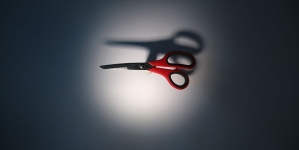-
Tips for becoming a good boxer - November 6, 2020
-
7 expert tips for making your hens night a memorable one - November 6, 2020
-
5 reasons to host your Christmas party on a cruise boat - November 6, 2020
-
What to do when you’re charged with a crime - November 6, 2020
-
Should you get one or multiple dogs? Here’s all you need to know - November 3, 2020
-
A Guide: How to Build Your Very Own Magic Mirror - February 14, 2019
-
Our Top Inspirational Baseball Stars - November 24, 2018
-
Five Tech Tools That Will Help You Turn Your Blog into a Business - November 24, 2018
-
How to Indulge on Vacation without Expanding Your Waist - November 9, 2018
-
5 Strategies for Businesses to Appeal to Today’s Increasingly Mobile-Crazed Customers - November 9, 2018
The Evolution Of The Answering Machine
 Though some people feel that Internet answering machines will gradually replace the answering machine device, the fact remains that many Americans still own and use the good old answering machine. And, it does seem like its phasing-out will take a long time. This feature takes you around the invention and evolution of this helpful machine.
Though some people feel that Internet answering machines will gradually replace the answering machine device, the fact remains that many Americans still own and use the good old answering machine. And, it does seem like its phasing-out will take a long time. This feature takes you around the invention and evolution of this helpful machine.
Advertisement
History Of The Answering Machine
In 1898, Valdemar Poulsen, a Danish engineer and inventor, invented a magnetic recording device that was called “telegraphone.” The device involved using a magnetizable medium (tape) that moved past a recording head. An electrical signal, that was equivalent to the sound that was to be recorded, was fed to the recording head. The recording was then played on a playback head, which picked up the changes in the tape and converted them into an electrical signal [1]. This was the first device that recorded telephone conversations and the answering machine owes its existence to this humble telegraphone.
However, though the technology was available, no one ever thought of creating an answering machine for over 3 decades.
37 years later, in 1935, the first answering machine was invented by Willy Muller. It stood three feet tall and found customers in orthodox Jews who were not allowed to answer phone calls on the Sabbath (a weekly day of rest). However, the size was just too much and the device was not commercially viable.
The idea lay in cold storage for another 25 years. In 1960, Dr. Kazuo Hashimoto invented a smaller and manageable answering machine for Phonetel, and this device was sold in the market.
However, it was Phonemate that invented the first commercially feasible answering machine, the Model 400, in 1971. The device weighed 10 pounds and it could screen calls and capture 20 messages on a reel to reel tape. Its owners could listen to the messages using an earphone. You can learn more about this product on the Smithsonian website.
The answering device evolved some more in 1983, when Dr. Kazuo Hashimoto invented a digital answering device, which sort of revolutionized the market.
After that, what we got was smaller and better answering devices till the online version hit the market and changed many age-old perceptions.
Online Answering Machines
An online answering service is the latest twist to the story. No device is required – all that the user has to do is subscribe to an online answering service, adjust the settings, connect his phone to the modem, and record his message on the software. The answering is done by the software, and the user can listen to the recorded messages at leisure. The messages are saved as files that can be emailed or archived. The subscription is a few dollars every month and users don’t have to bother about installing the software because everything works on the vendor’s cloud. Some people are switching over to the Internet answering machine, but it is yet unclear if the old answering device will be phased out.
This was about the evolution of the age-old answering device.
Advertisement
David S. Cate is a blogger from Springfield, MA. He’s interested in the most innovative internet solutions, one of which is the use of internet answering machines.




























